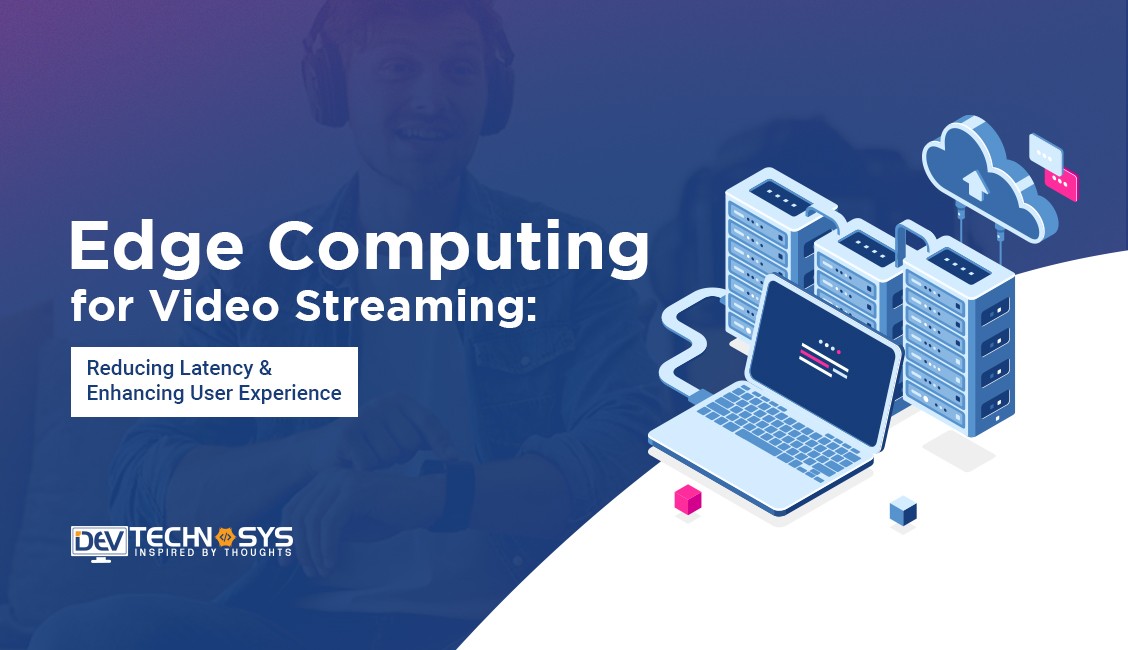
-
Table of Contents
Edge Computing for Video Streaming: Delivering High-Quality Content
Introduction
Edge computing for video streaming is a technology that enables the delivery of high-quality content by processing and storing data closer to the end-users. This approach reduces latency and bandwidth requirements by bringing the computing resources closer to the network edge, resulting in faster and more efficient video streaming experiences. By leveraging edge computing, video streaming providers can enhance the quality, reliability, and responsiveness of their services, ultimately improving user satisfaction.
The Benefits of Edge Computing for Video Streaming: Enhancing Content Delivery
Edge Computing for Video Streaming: Delivering High-Quality Content
The Benefits of Edge Computing for Video Streaming: Enhancing Content Delivery
In today’s digital age, video streaming has become an integral part of our lives. Whether it’s watching movies, TV shows, or live events, we rely on video streaming platforms to deliver high-quality content to our devices. However, as the demand for video streaming continues to grow, so does the need for faster and more efficient content delivery. This is where edge computing comes into play.
Edge computing is a distributed computing paradigm that brings computation and data storage closer to the location where it is needed. Instead of relying on a centralized cloud infrastructure, edge computing leverages a network of edge servers located at the edge of the network, closer to the end-users. This proximity allows for faster data processing and reduced latency, resulting in a seamless video streaming experience.
One of the key benefits of edge computing for video streaming is improved content delivery. By bringing the computing resources closer to the end-users, edge servers can process and deliver video content more efficiently. This means reduced buffering times, faster start-up times, and smoother playback. With edge computing, users can enjoy their favorite videos without interruptions or delays, even during peak usage hours.
Another advantage of edge computing is its ability to handle high volumes of video traffic. As more and more users stream videos simultaneously, traditional cloud-based infrastructures may struggle to keep up with the demand. Edge servers, on the other hand, can handle the increased traffic by distributing the workload across multiple nodes. This ensures that each user receives the content they want without experiencing any degradation in quality.
Furthermore, edge computing enables personalized content delivery. With the vast amount of video content available today, users have different preferences and interests. Edge servers can analyze user data and deliver personalized recommendations based on their viewing history and preferences. This not only enhances the user experience but also helps video streaming platforms increase user engagement and retention.
In addition to improving content delivery, edge computing also enhances security for video streaming platforms. By processing data closer to the end-users, edge servers can implement real-time security measures to protect against cyber threats. This includes detecting and mitigating DDoS attacks, encrypting data transmissions, and monitoring for any suspicious activities. With edge computing, video streaming platforms can ensure that their content and user data are secure, providing peace of mind to both content providers and viewers.
Moreover, edge computing reduces the reliance on a stable internet connection for video streaming. In traditional cloud-based infrastructures, a stable and high-speed internet connection is crucial for uninterrupted streaming. However, with edge computing, the content is cached and processed locally on the edge servers. This means that even if the internet connection becomes unstable or slow, users can still access and enjoy their favorite videos without interruptions.
In conclusion, edge computing offers numerous benefits for video streaming platforms. By bringing computation and data storage closer to the end-users, edge servers enhance content delivery, handle high volumes of video traffic, enable personalized recommendations, enhance security, and reduce reliance on a stable internet connection. As the demand for high-quality video streaming continues to rise, edge computing is becoming an essential technology for delivering seamless and immersive video experiences.
Edge Computing: Revolutionizing Video Streaming with Improved Quality
Edge Computing for Video Streaming: Delivering High-Quality Content
In today’s digital age, video streaming has become an integral part of our lives. Whether it’s watching movies, TV shows, or live events, we rely on video streaming platforms to deliver high-quality content to our devices. However, the increasing demand for high-definition videos and the need for real-time streaming have put a strain on traditional cloud-based infrastructures. This is where edge computing comes into play, revolutionizing video streaming with improved quality.
Edge computing is a distributed computing paradigm that brings computation and data storage closer to the edge of the network, closer to the end-users. By placing computing resources at the edge of the network, edge computing reduces latency and improves the overall performance of video streaming. This is particularly important for real-time applications like video streaming, where even a slight delay can result in a poor user experience.
One of the key advantages of edge computing for video streaming is its ability to reduce latency. With traditional cloud-based infrastructures, video content is typically stored in centralized data centers, which can be located far away from the end-users. This distance introduces latency, causing delays in video playback and buffering issues. By bringing computation and data storage closer to the end-users, edge computing minimizes latency and ensures smooth video streaming.
Moreover, edge computing enables content delivery networks (CDNs) to cache video content at the edge of the network. CDNs are responsible for delivering video content to end-users, and by caching content at the edge, CDNs can reduce the load on the central servers and improve the delivery speed. This means that users can access video content faster, without experiencing buffering or playback issues.
Another benefit of edge computing for video streaming is its ability to handle high-definition videos. As the demand for high-quality content increases, traditional cloud-based infrastructures struggle to deliver high-definition videos in real-time. Edge computing, on the other hand, can process and stream high-definition videos efficiently, thanks to its distributed nature and proximity to the end-users. This ensures that users can enjoy their favorite movies and TV shows in stunning detail, without any lag or degradation in quality.
Furthermore, edge computing enhances the scalability of video streaming platforms. With traditional cloud-based infrastructures, scaling up to meet the increasing demand for video streaming can be a complex and time-consuming process. Edge computing simplifies this process by allowing video streaming platforms to deploy additional edge nodes as needed. These edge nodes can handle the processing and delivery of video content, ensuring that the platform can scale seamlessly to accommodate more users and deliver high-quality content consistently.
In conclusion, edge computing is revolutionizing video streaming by delivering high-quality content to end-users. By reducing latency, caching content at the edge, handling high-definition videos, and enhancing scalability, edge computing improves the overall performance of video streaming platforms. As the demand for high-quality content continues to grow, edge computing will play a crucial role in ensuring that users can enjoy their favorite videos without any interruptions or quality degradation. With edge computing, the future of video streaming looks brighter than ever.
How Edge Computing Optimizes Video Streaming: Ensuring High-Quality Content Delivery
Edge Computing for Video Streaming: Delivering High-Quality Content
In today’s digital age, video streaming has become an integral part of our lives. Whether it’s watching movies, TV shows, or live events, we rely on video streaming platforms to deliver high-quality content seamlessly. However, the increasing demand for video streaming has put a strain on traditional cloud-based infrastructures, leading to issues such as buffering, latency, and poor video quality. This is where edge computing comes into play, optimizing video streaming and ensuring high-quality content delivery.
Edge computing is a distributed computing paradigm that brings computation and data storage closer to the edge of the network, closer to the end-users. By placing computing resources at the edge of the network, edge computing reduces the distance between the user and the content, resulting in faster response times and improved user experience. When it comes to video streaming, edge computing offers several advantages that enhance the quality of the content being delivered.
One of the key benefits of edge computing for video streaming is reduced latency. Latency refers to the delay between the time a user requests a video and the time it takes for the video to start playing. With traditional cloud-based infrastructures, the video data has to travel long distances from the cloud server to the user’s device, resulting in significant latency. By leveraging edge computing, video content can be cached and processed closer to the user, reducing the latency and ensuring a smooth streaming experience.
Another advantage of edge computing is improved bandwidth utilization. Bandwidth is a limited resource, and streaming high-quality videos requires a significant amount of it. With edge computing, video content can be cached at the edge servers, reducing the need for repeated data transfers from the cloud server to the user’s device. This not only saves bandwidth but also reduces the load on the network, resulting in faster and more reliable video streaming.
Edge computing also enables adaptive bitrate streaming, which is crucial for delivering high-quality content. Adaptive bitrate streaming adjusts the quality of the video stream based on the user’s network conditions, ensuring smooth playback without buffering. With edge computing, the decision-making process for adaptive bitrate streaming can be performed at the edge servers, taking into account real-time network conditions and delivering the most appropriate video quality to the user. This ensures a consistent and high-quality streaming experience, regardless of the user’s network capabilities.
Furthermore, edge computing enhances content delivery by enabling content caching and content delivery networks (CDNs). Content caching involves storing frequently accessed video content at the edge servers, reducing the need for repeated data transfers from the cloud server. CDNs, on the other hand, distribute the video content across multiple edge servers, ensuring efficient content delivery and reducing the load on individual servers. By leveraging content caching and CDNs, edge computing optimizes content delivery, resulting in faster load times and uninterrupted streaming.
In conclusion, edge computing plays a crucial role in optimizing video streaming and delivering high-quality content. By reducing latency, improving bandwidth utilization, enabling adaptive bitrate streaming, and enhancing content delivery, edge computing ensures a seamless and enjoyable streaming experience for users. As the demand for video streaming continues to grow, edge computing will become increasingly important in meeting the expectations of users and delivering high-quality content in a fast and efficient manner.
Conclusion
In conclusion, edge computing for video streaming is a promising solution for delivering high-quality content. By bringing computing resources closer to the end-users, it reduces latency and improves the overall streaming experience. Edge computing enables faster content delivery, reduces network congestion, and enhances video quality by optimizing bandwidth usage. It also offers benefits such as improved scalability, cost-efficiency, and better security. As the demand for high-quality video streaming continues to grow, edge computing is expected to play a crucial role in meeting these requirements and providing a seamless streaming experience for users.




